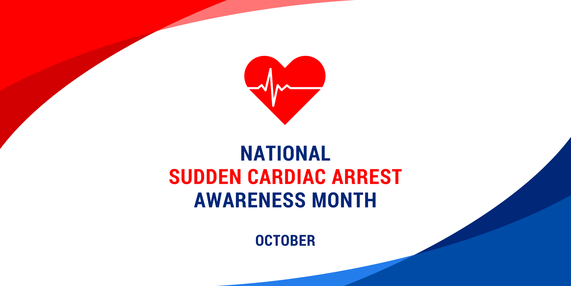 Have you heard of Commotio cordis? Commotio cordis is Latin for "agitation of the heart" and is generally understood to mean “instantaneous cardiac arrest produced by non-penetrating chest blows in the absence of heart disease or identifiable morphologic injury to the chest wall or heart." Youth "ball and stick sports" athletes are especially vulnerable and susceptible.
Sudden cardiac arrest can also be caused by an abnormality in the heart’s electrical system and structure and is both the leading cause of death on school campuses as well as the number one killer of student-athletes. It is estimated that one in 300 youth unknowingly have an underlying, undetected heart condition.
Additional Activities
- As youth fall and winter sports activities move into high gear, it's prime time to refresh one's CPR/AED training skills. Learn these skills at the Learn Hands - Only CPR Live and the #CPRsaveslives pages on YouTube.
- Learn more about sudden cardiac arrest at:
- Additional resources include:
Your various First Aid/CPR/AED vendors and local hospitals or medical organizations can also provide additional guidance/training.
October is National Substance Abuse Prevention Month. Millions of Americans suffer from substance abuse, which includes underage drinking, alcohol dependency, non-medical use of prescription drugs, abuse of over-the-counter medications, and illicit drug use. Visit the following web sites for resources in combatting this often deadly issue:
Children, youths and families are often adversely impacted concerning substance abuse. Studies show that the earlier an individual starts smoking, drinking or using other drugs, the greater the likelihood of developing addiction. Nine out of 10 people who abuse or are addicted to nicotine, alcohol or other drugs began using these substances before they were 18. People who began using addictive substances before age 15 are nearly seven times likelier to develop a substance problem than those who delay first use until age 21 or older.
 October is National Protect Your Hearing Month. Occupational hearing loss is one of the most common work-related illnesses in the United States. Each year, about 22 million U.S. workers are exposed to hazardous noise levels at work. Over 30 million U.S. workers are exposed to chemicals, some of which are harmful to the ear and hazardous to hearing. Substances including certain pesticides, solvents, and pharmaceuticals that contain ototoxicants can negatively affect how the ear functions, causing hearing loss, and/or affect balance.
In addition to damaging workers’ quality of life, occupational hearing loss carries a high economic price to society. You can find more information and resources at:
October was first designated as Crime Prevention Month through a Presidential proclamation in 1984. Since then, the National Crime Prevention Council (NCPC) has been working with local law enforcement, government agencies, civic groups, schools, businesses, and other organizations to help them spread the word about crime prevention and personal safety.
The NCPC will empower communities to create safe communities through a variety of initiatives, tools, and more; Crime Prevention Month: National Crime Prevention Council
Each week of the month will feature a different theme:
- Week 1: Mapping Out Crime
- Week 2: Home and Neighborhood Safety
- Week 3: Fighting Fentanyl
- Week 4: Curbing Counterfeits
October also is Breast Cancer Awareness Month. Did you know one in eight women will be diagnosed with breast cancer in their lifetime? Google or check out the National Breast Cancer Foundation website for ideas on how to get involved to raise awareness, including regular preventive screenings.
Also visit the CDC's breast cancer awareness resources for more information.
As a "look ahead" preview, stay tuned for autumn safety tips. November signals the end of daylight savings time, low ambient light/night time driving challenges, the onset of inclement weather, and the holiday season. More to follow accordingly.
|